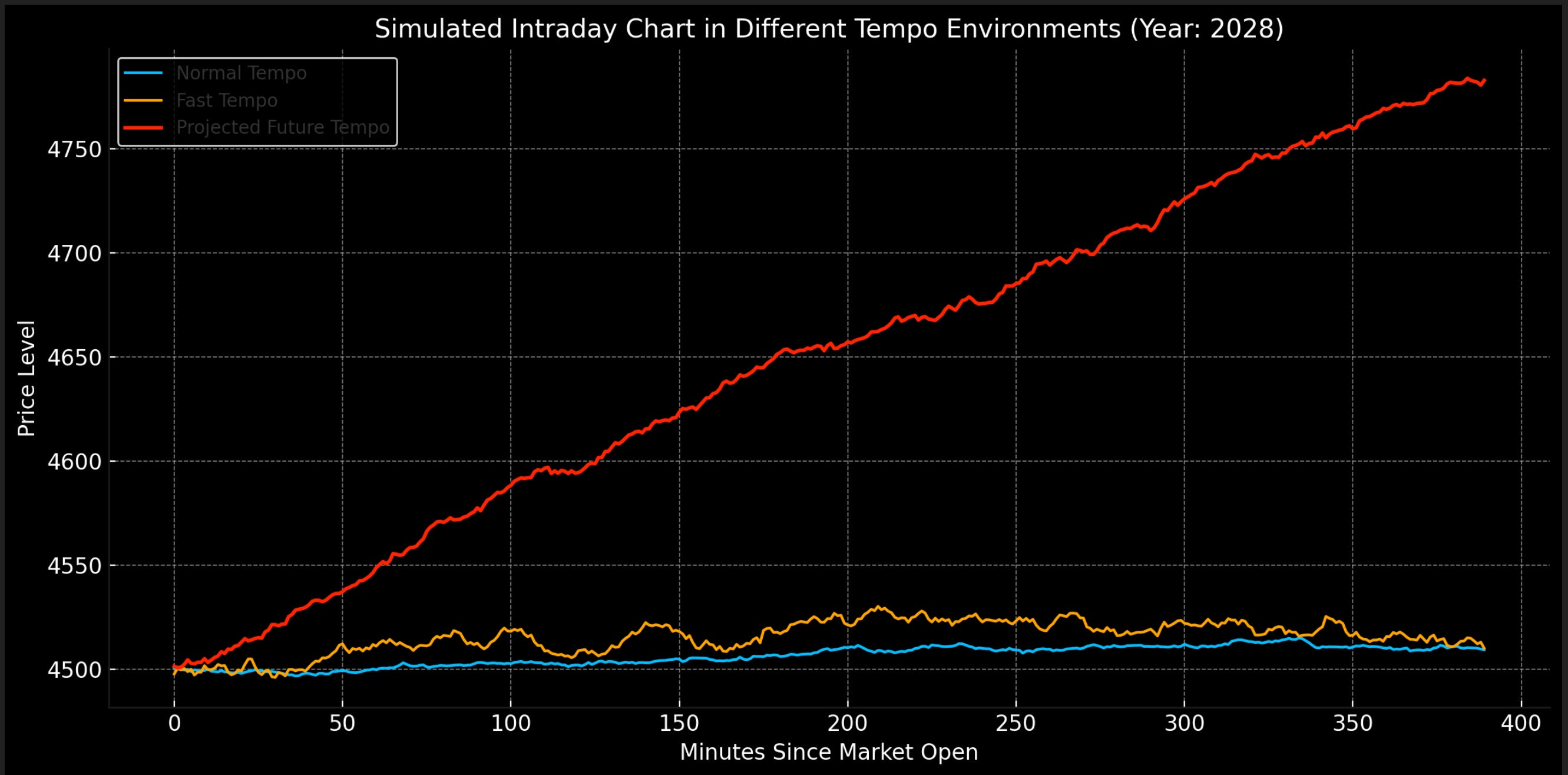The Smoking Gun II
We are not predicting the market. We are reporting on its emerging structural reality.
What you're about to see is not a hypothetical. It's a live feed of where the tape is heading — and in many ways, has already begun to arrive. This is not about making a bold forecast. It’s about acknowledging a truth that’s been accelerating in front of our eyes.
The charts below don’t speculate — they illustrate.
They document the transformation already taking place: a shift away from drift and reversion, toward tempo-led resolution and structurally sequenced market behavior.
Yes — structurally, behaviorally, and probabilistically — this is irreversible now.
What you’re looking at is a simulated intraday bar chart — not of today’s market, but of what the future will look like under accelerated structural tempo.
This isn’t fantasy.
It’s forecasting based on existing trends — amplified by precision authorship, volume alignment, and structural velocity.

Each bar = one minute of S&P 500 index price action.
Green bars represent what upward price movement looks like(bullish tempo).
Red bars represent what downward price movement looks like(bearish tempo).
The chart spans from 9:30 AM to 4:00 PM (full market session).
Why This Matters
Most investors still expect:
Gradual price trends
Random walk behavior
“Normal” volatility
But in a structurally accelerated market:
Ranges expand geometrically
Speed outpaces logic
Timing is the edge
If your models, systems, or mindset don’t adapt — you’ll be trading yesterday’s rules in a future market that punishes hesitation.
The Tempo King: Fast and Furious
This chart shows three simulations of the same market day under different structural environments
Normal Tempo
Blue (Past & Present)
Reflects the current market behavior — stable, reactive, modest resolution.
Relative Speed 100% (baseline)
Average Daily Range 25-35 points (2023)
Fast Tempo
Orange (Present)
Reflects occasional bursts and acceleration — like 2023–2025 market moments.
Projected Future Tempo
Relative Speed 135% Faster
Average Daily Range 45-60 points (2025)
Faster Tempo
Red (Future)
Represents the structurally authored market of 2028 — consistent resolution, faster ranges, no wasted motion.
Relative Speed 310% Faster
Average Daily Range 90-120 points (2028)
The X-axis represents minutes since market open (from 9:30 AM to 4:00 PM).
The Y-axis shows a hypothetical price level (S&P 500).
What you’re seeing isn’t just speed —you’re seeing structural tempo encoding into the market itself.
Now, combine that with the top chart.
Every legacy framework — from valuation models to volatility hedging, from trend-following systems to macro overlays — is built on an assumption that will no longer hold:
That time behaves linearly, and price discovers gradually.
In the structurally developed market of 2028:
Mean reversion breaks — because equilibrium zones collapse faster than they can be defended.
Valuation anchoring fails — because price spends less time near “fair value” and more time in acceleration arcs.
Options models distort — because implied volatility decays during trend, not chop.
Trend models lag — because the entire move resolves before their triggers even engage.
Volume-weighted tools misfire — because volume is no longer smoothly distributed; it detonates in bursts.
Risk models overestimate uncertainty — not realizing that increased range ≠ increased randomness.
In short:
Most of the streets tools don’t break because the market is too chaotic.
They break because the market becomes too efficient — too fast.
This is not a volatility spike.
It’s a tempo regime change.
This isn’t just a new market.
It’s a new dimension — where price doesn’t wander, it accelerates.
Where time doesn’t pass, it compresses.
Where value isn’t discovered, it’s imposed — by structural authorship, not sentiment.
And the clock?
It doesn’t melt.
It ticks — louder, faster, and in your direction… if you listen to the author.




